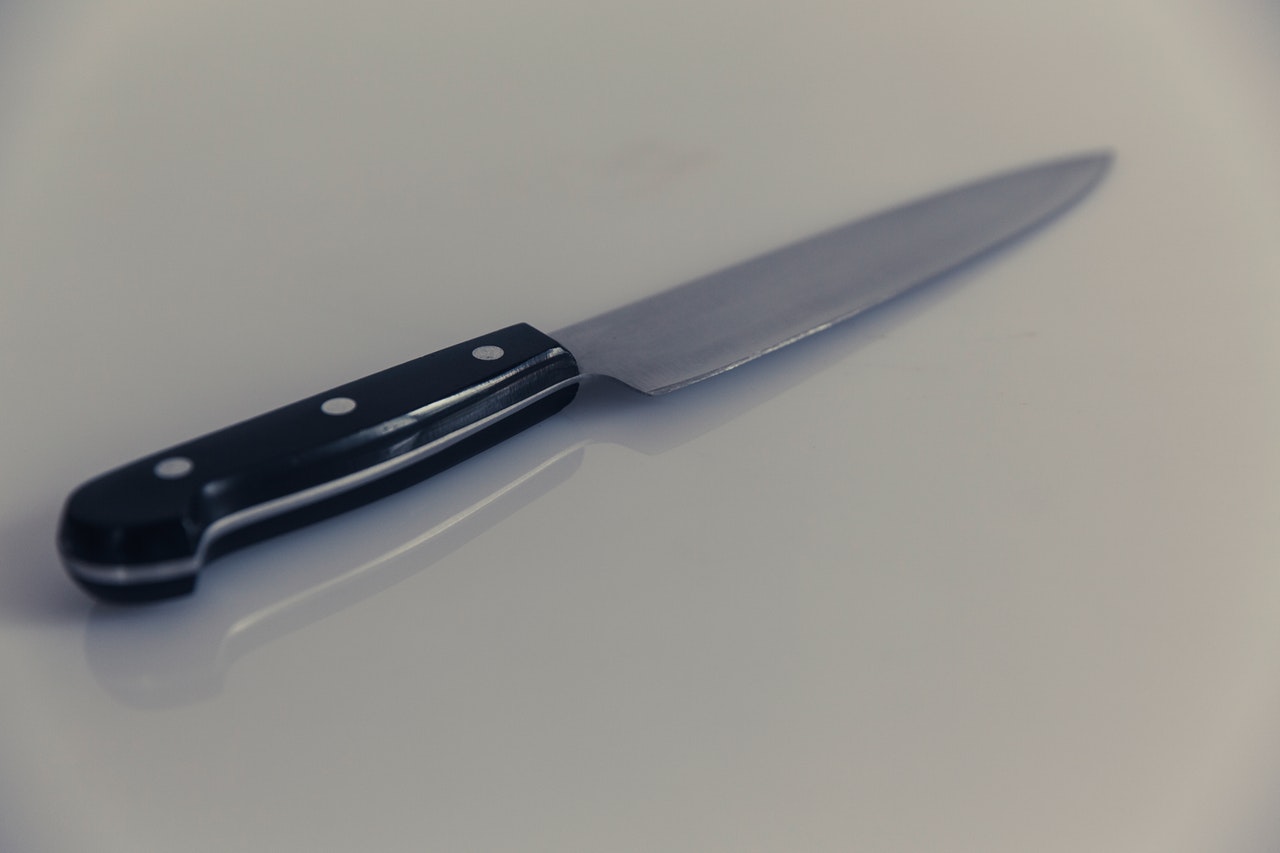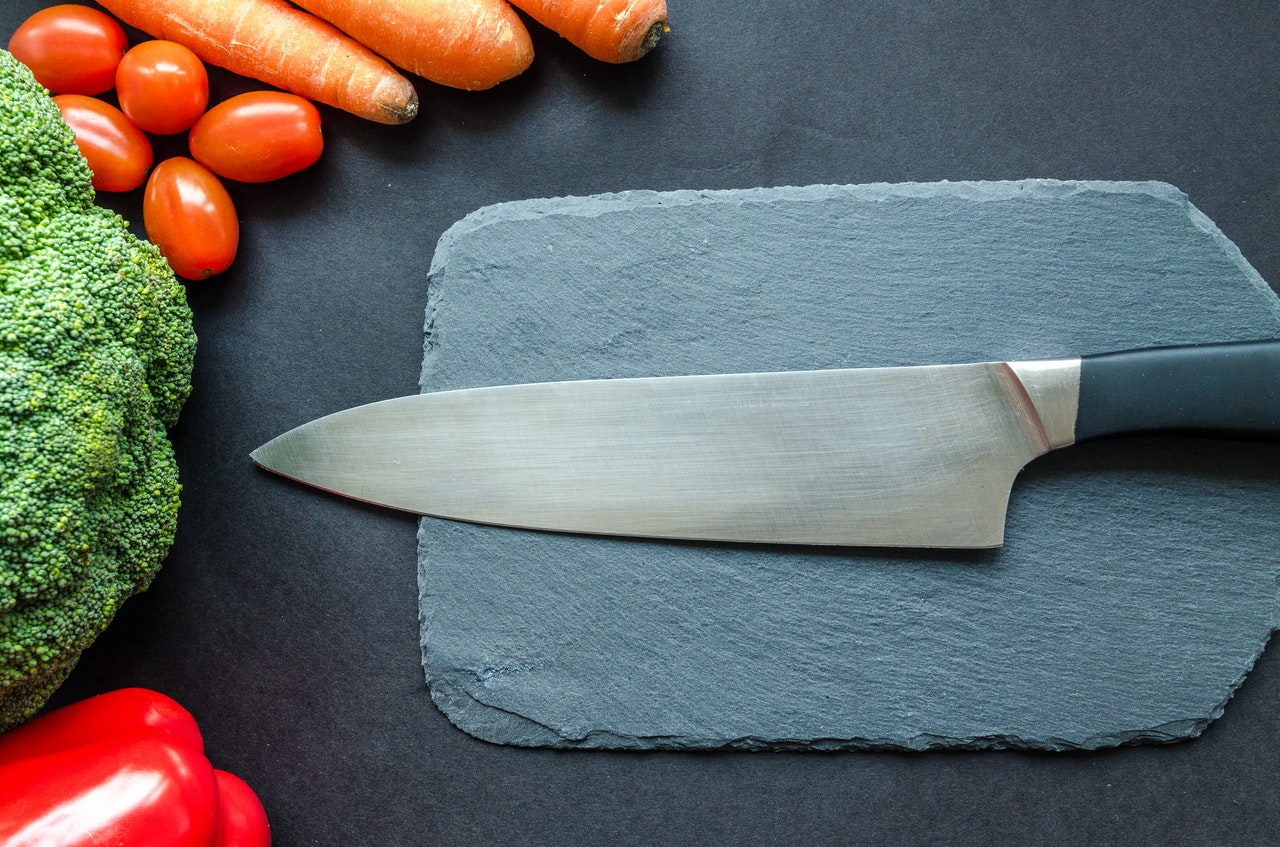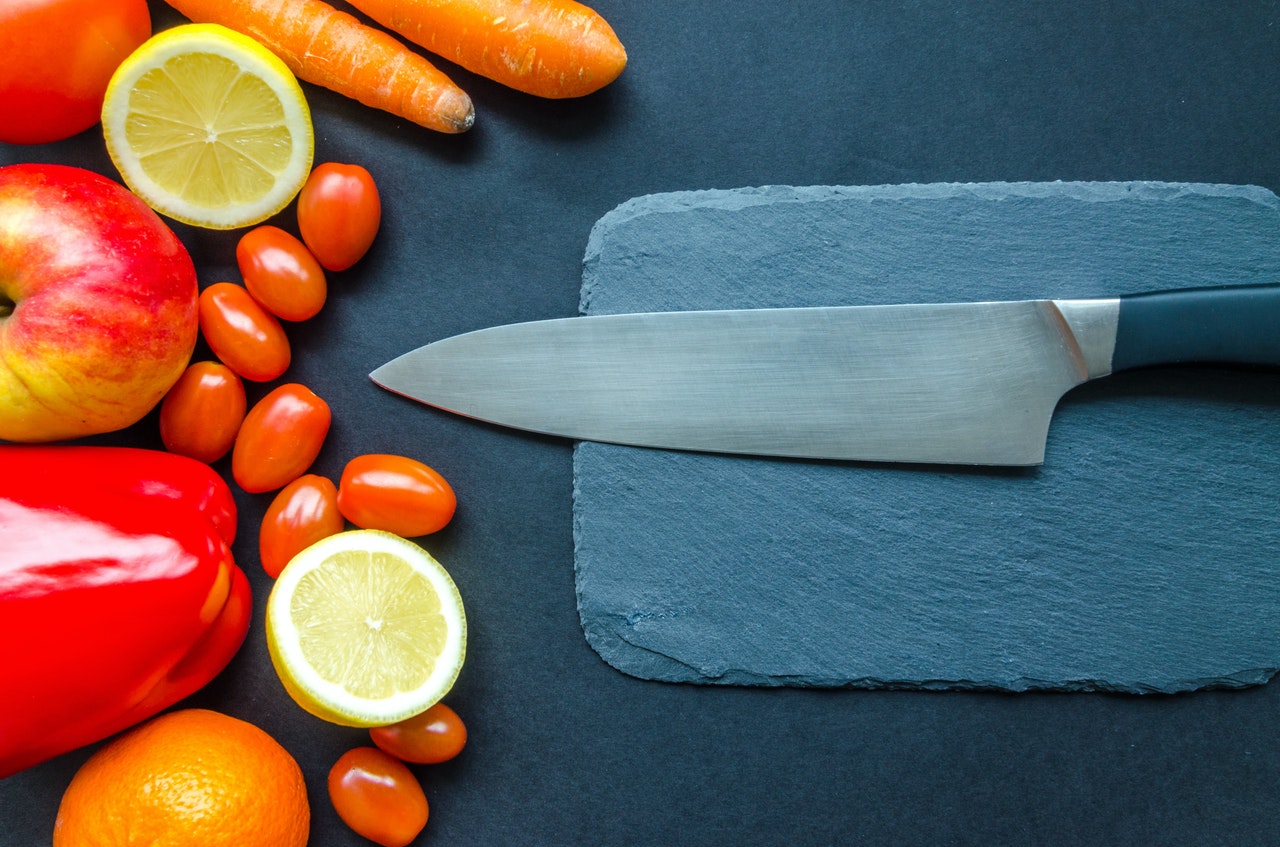The Only 4 Knives You Need in the Kitchen

Believe it or not, you don’t need those huge blocks packed with who-knows-how-many different knives. Professional chefs rely on four knives to get the job done, and that’s all you need:
1. Chef’s Knife
This is going to be your workhorse. A chef’s knife is your go-to for any kind of meal. It handles
food prep quickly and expertly. A great chef’s knife can do anything:
• Chopping up onions
• Smashing and mincing garlic cloves
• Slicing potatoes
• Cleaning and preparing chicken
• Shredding leafy greens
• Slicing carrots into strips
It’s impossible to beat the versatility of this all-purpose kitchen knife. Chef’s knives are great for making an ultra-fine chiffonade as well. Chiffonade is when you cut cabbage and other greens into tiny strips — who said an old dog can’t learn new tricks?

2. Santoku
A santoku is basically the Japanese version of a chef’s knife. There are a few important
differences, however. A chef’s knife has an 8–10 inch blade that tapers upward gradually. A
santoku’s blade stays closer to 6–7 inches, and the blade stays flat. A santoku usually weighs
less than a chef’s knife.
The best choice depends on how you like to cook. Santokus are better for making downward
slices. They have the precision to cut amazing sushi and the strength to slice through carrots like nothing. Chef’s knives have the advantage of being able to rock back-and-forth for easier dicing and chopping.

3. Paring Knife
Don’t try peeling fresh fruit or veggies with a chef’s knife. It will tire you out and make your hands hurt (just trust me on that). Instead, grab the right tool for the job: a sleek paring knife. Paring knives are lightweight, precise and fast. And I’m talking lightning fast.
A paring knife has a short blade of about 3–3.5 inches. It's strong and firm, so it cuts exactly
where you want it to. Use this knife to peel tomatoes, cut oranges into wedges for salad, devein shrimp, slice limes, trim strawberries or clean bell peppers (though that white part has the most vitamin C). A great paring knife will save you a ton of time for the right things.
4. Serrated Knife
Serrated knives come in different sizes and shapes, from long-and-boring bread knives to
medium-sized monsters with wicked-looking curves. Yes, that’s the one I bought — I’m a guy
after all. For the best results, choose a serrated knife that has large, pointed tips with deep
grooves.
A serrated knife delivers amazing results when you want to avoid damaging ingredients. For
example, it slices through French bread expertly, leaving the soft interior fluffy and the crispy
exterior intact. Serrated knives give you perfect slices of tomato for your favorite burgers and
tender strips of grilled chicken, beef or Portobello that are deliciously moist.
Your Ideal Knife Collection
Stick to just a few knives, but invest in great quality. Spend the most for your chef’s knife or
santoku. It’s worth it. For the other knives, look for quality but don’t get carried away.
When buying a knife, hold it in your hand. Does it feel comfortable? Don’t go too heavy or too
light. It’s not hard to find something that’s just right. Take it from this ol' crow - you’ll love it for the rest of your life.

